North African Jews did not constitute a single community before or during World War II but, rather, were a diverse population of roughly 500,000. There were variations between the present-day countries of the Maghreb (Morocco, Algeria, Tunisia, and Libya); by class, sub-ethnic histories, region; and by rural or urban lifestyle.
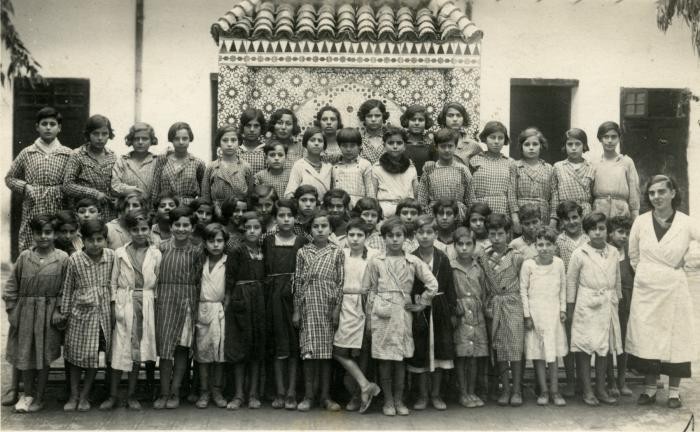
Laurette Cohen (front row, far right) poses with her students at an Alliance Israelite School in Morocco. 1935.
Laurette was born in Oran, Algeria, 1911. In 1932, she married Prosper Cohen (born in Meknes in 1909). They were both teachers for the Alliance Israelite Universelle Schools in Morocco. Their daughter, Mathilde, was born in Tangiers on August 31, 1933. Before 1939, the family lived in Meknes and Fez. Later, Laurette and Prosper were sent to teach in other different locations where they were most needed. In 1938, Prosper, began to study law. Mathilde attended a French government school. Though new racial laws led to the expulsion of most Jewish children, she was allowed to continue due to the fact that her parents were teachers.
Item View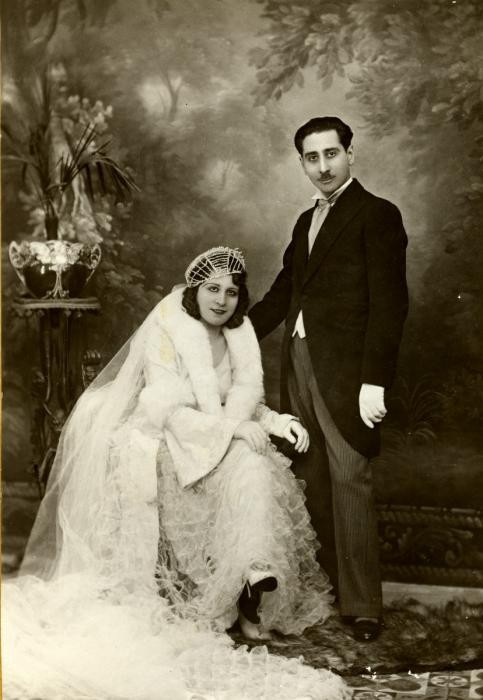
Prewar wedding portrait of Reine and Yishua Ghozlan in Constantine, Algeria, on March 29, 1932.
The couple experienced antisemitism in the prewar years, and in 1933 Reine and Yishua survived a deadly pogrom by hiding with French Christian friends. After the start of World War II, Yishua was thrown out of his position in the post office. Reine, Yishua, and their children were evicted from their apartment.
Item View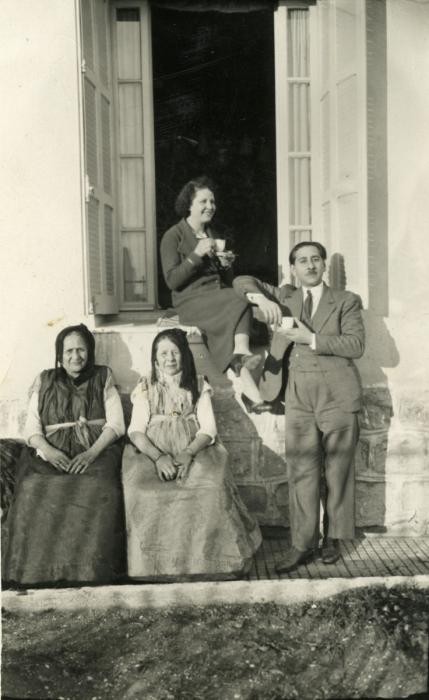
Reine (seated in window) and Yishua Ghozlan (standing) were married in Constantine, Algeria, on March 29, 1932. They are pictured here with two of their parents.
The couple experienced antisemitism in the prewar years, and in 1933 Reine and Yishua survived a deadly pogrom by hiding with French Christian friends. After the start of World War II, Yishua was thrown out of his position in the post office. Reine, Yishua, and their children were evicted from their apartment.
Item View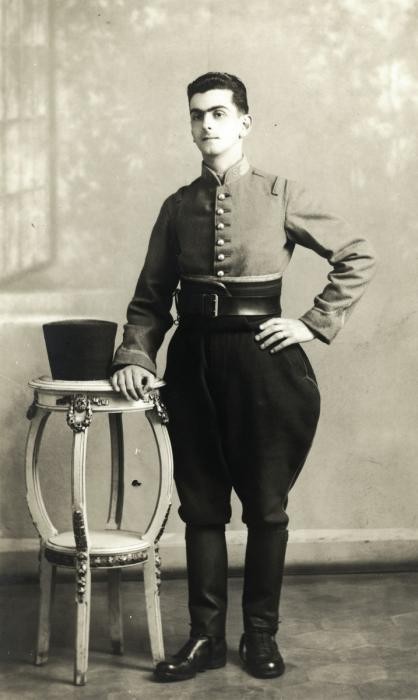
Joseph Roger Cheraki poses in the uniform of an Algerian soldier, ca. 1935.
Joseph met Elizabeth Seiberl, and they married on October 27, 1936, in Algiers. In 1941, Joseph lost his job, their son Alfred was expelled from school, and they later had to sell their house. In 1942 Joseph, Elizabeth, and their sons Alfred and Jacques had to wear the yellow star. Boys threw stones at Alfred and Jacques. Joseph was sent to a forced-labor camp for a few months. He was eventually released. In 1946 the family relocated to Toulouse.
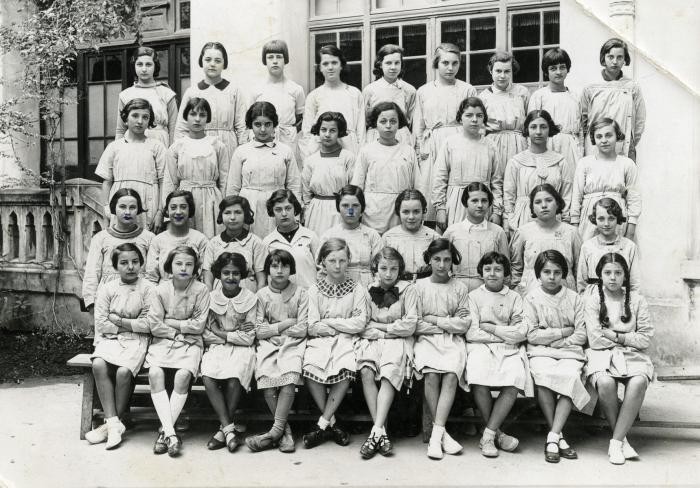
A group of Tunisian schoolgirls wearing aprons. Nadia Cohen is in the first row, third from the left. Tunis, Tunisia, ca. 1930-1935.
Nadia Cohen was born on January 17, 1924, in Tunis. Nadia's parents came from Orthodox households, but her father left the yeshiva at the age of seven to study Italian, Arabic, and accounting in a French school. In 1938, Nadia was sent to a boarding school in France. She returned home for a visit in the summer of 1939 but could not return to school that fall due to the outbreak of the war.
Immediately after the Allied landings in Algeria and Morocco, the Germans occupied Tunisia. After the occupation, an SS officer came to the Cohen's house and confiscated everything leaving only the table and chairs for the Germans to use. They gave the family 24 hours to pack and leave and then expropriated the home to use as a barracks for soldiers.
Item View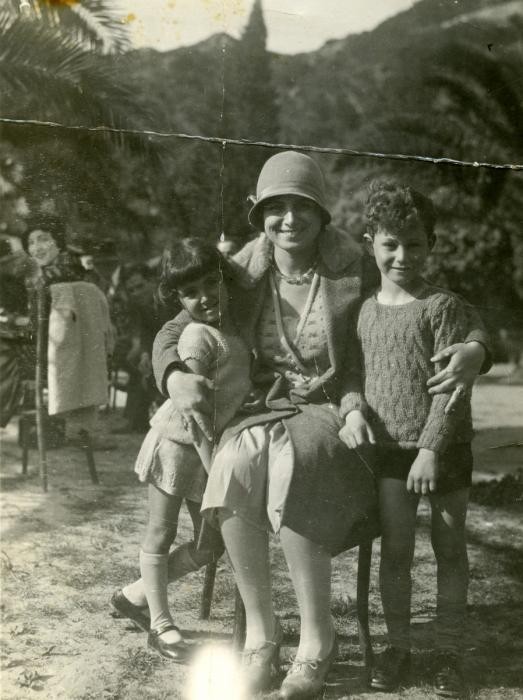
Terese Cohen, a Tunisian Jewish women, poses with her two children, Nadia and Marcel.
Immediately after the Allied landings in Algeria and Morocco, the Germans occupied Tunisia. After the occupation, an SS officer came to the Cohen's house and confiscated everything leaving only the table and chairs for the Germans to use. They gave the family 24 hours to pack and leave and then expropriated the home to use as a barracks for soldiers.
Item View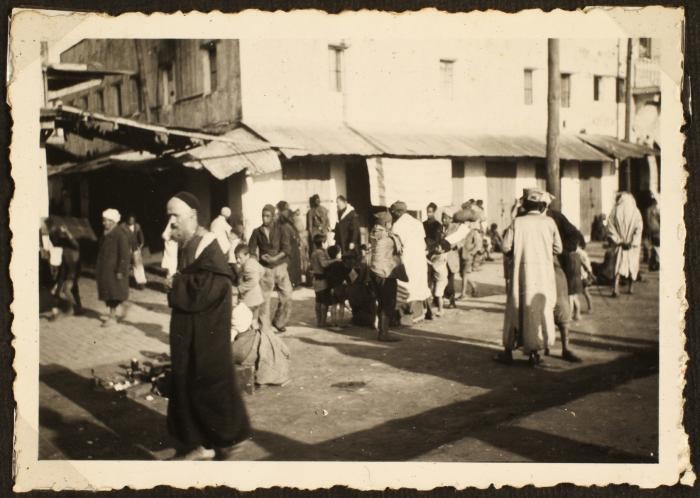
Street scene in Morocco, Casablanca, 1941-42.
Item View![Guests at a Jewish wedding. Morocco, 1942. [LCID: 88135] Guests at a Jewish wedding. Morocco, 1942. [LCID: 88135]](https://encyclopedia.ushmm.org/images/large/be875cf2-c908-4612-bade-50b891655a82.jpg)
Jewish wedding in Morocco, 1942.
Photo: US Holocaust Memorial Museum, courtesy of YIVO Institute for Jewish Research
Item View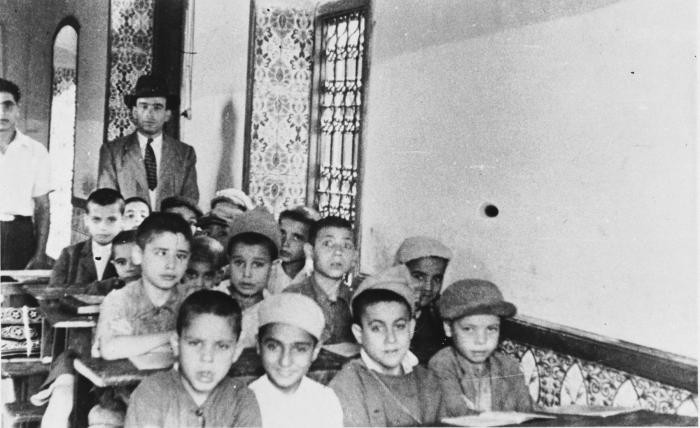
This photo was taken during the journey of Bluma (Kleinhandler) and Zygmunt Godzinski from Poland to Argentina. Casablanca, Morocco, 1946.
Item View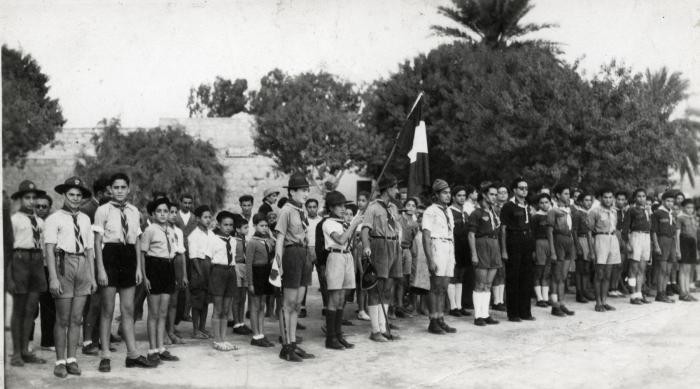
Children stand at attention during a flag raising ceremony at the Ayindram Betar summer camp. Tunisia, North Africa, 1946.
We would like to thank Crown Family Philanthropies, Abe and Ida Cooper Foundation, the Claims Conference, EVZ, and BMF for supporting the ongoing work to create content and resources for the Holocaust Encyclopedia. View the list of donor acknowledgement.